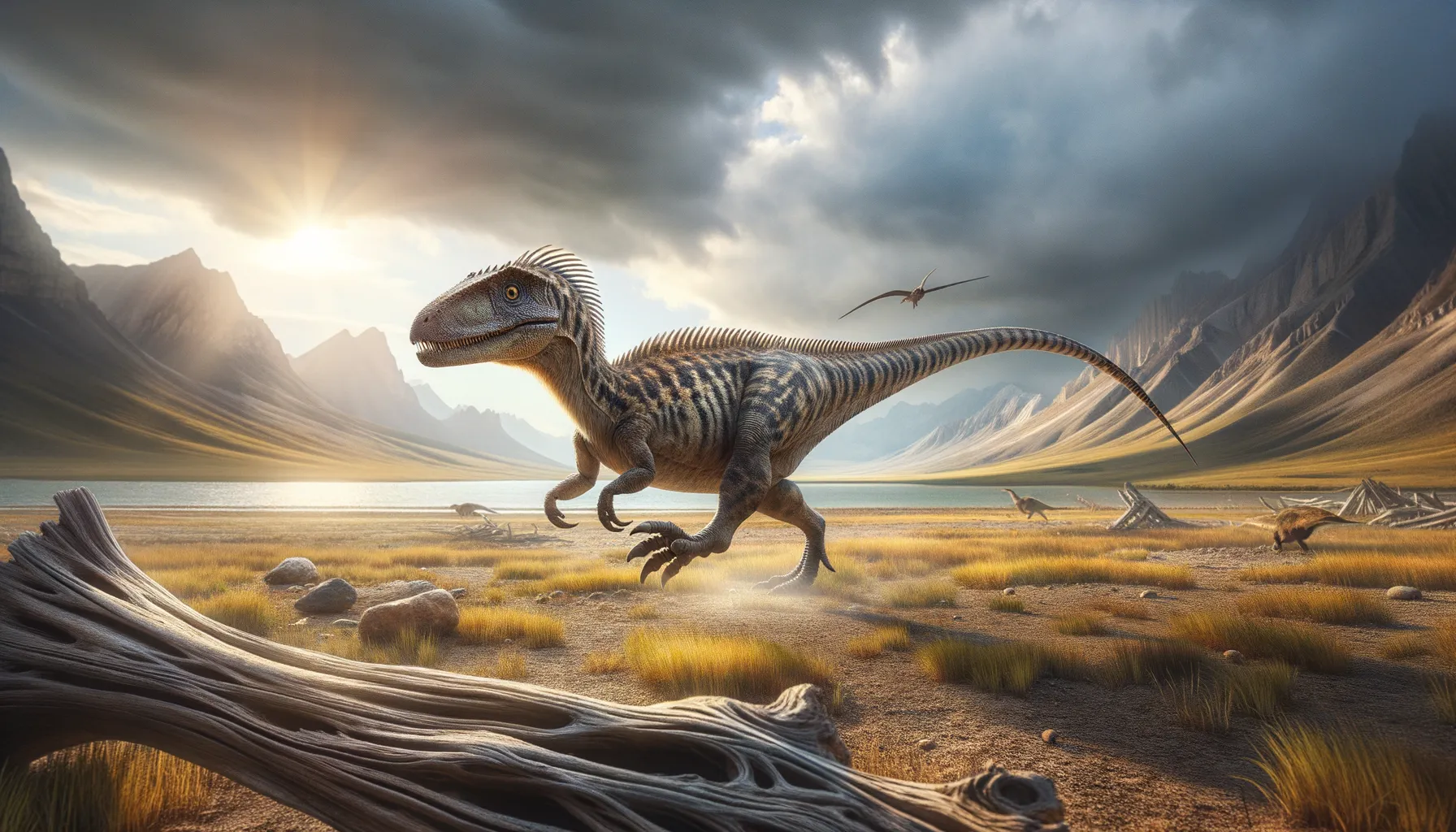
Tochisaurus
Swift hunter of the late Cretaceous era.
Period
Cretaceous
Length
Measured about 2 meters in length.
Height
Stood approximately 1 meter tall at the hip.
Weight
Estimated to weigh around 20 kilograms.
Tochisaurus was a small, agile theropod dinosaur that lived during the Late Cretaceous period. Initially discovered in Mongolia, this dinosaur is estimated to have been about 2 meters long and weighed around 20 kilograms. Its physical characteristics suggest it might have been a fast runner, which likely helped it in hunting small prey or evading larger predators of its time.
Diet
Tochisaurus likely had a carnivorous diet, feeding on smaller vertebrates and possibly insects. Its sharp teeth and agile body suggest it was well-suited for capturing quick-moving prey.
Hunting
This dinosaur probably relied on its speed and agility to hunt, quickly darting after small animals. Its long legs hint at a capacity for short bursts of speed to ambush unsuspecting prey.
Environmental challenges
Living in a dynamic Cretaceous environment, Tochisaurus faced predators and competition from other carnivores. As a small theropod, it had to navigate through varied terrain that sometimes favored larger dinosaurs. Climatic conditions also changed over time, which could have influenced its hunting and survival strategies.
Speed
Believed to have been relatively fast, based on limb structure.
Lifespan
Exact lifespan unknown, typical small theropods lived 10-20 years.
First discovery
First discovered in Mongolia in the late 20th century.
Fun Facts
- Tochisaurus is a lesser-known dinosaur from the Late Cretaceous period, discovered in Mongolia.
- Its name means 'Tochi lizard,' which refers to the area where it was found, the Tochi region.
- Tochisaurus belonged to the theropod group, which also includes famous predators like Velociraptor and Tyrannosaurus rex.
- Unlike its fearsome relatives, Tochisaurus is believed to have been a smaller theropod, possibly with some bird-like features.
- Because of its partial fossil remains, scientists know relatively little about Tochisaurus compared to other dinosaurs.
- Tochisaurus provides important clues in understanding the diversity and evolution of theropods in Asia during the Late Cretaceous.
Growth and Development
Tochisaurus likely experienced rapid growth in its early life stages, typical of small theropods. Juveniles would have been vulnerable to predators, necessitating quick development. As it matured, its physical attributes such as sharp teeth and claws would become better developed for hunting and self-defense.
Habitat
Tochisaurus inhabited regions that are today part of Mongolia, suggesting a landscape that was likely varied, with open areas for hunting. The climate during this dinosaur’s time included semi-arid conditions with seasonal variations. Such environments provided areas to hide from predators and ample hunting grounds for small prey.
Interaction with other species
As a small theropod, Tochisaurus likely avoided direct confrontations with larger dinosaurs. It may have competed with similar-sized carnivores for food sources. Interaction with herbivorous species would have mainly centered around predation on smaller individuals or their offspring.
Natural lifespan
Tochisaurus may have lived anywhere from 10 to 20 years if it survived predation and environmental hazards.
Reproduction
Like many other theropods, Tochisaurus reproduced by laying eggs. Nesting sites would probably have been chosen based on safety and warmth, hidden away from predators. It is likely that the young were relatively independent soon after hatching.
Social behaviour
Tochisaurus may have exhibited solitary behavior, common among small carnivorous dinosaurs. However, limited evidence suggests it could have formed small groups for hunting efficiency or protection. Interaction with other members of its species might have been essential for mating.
Fossil locations
Fossil remains of Tochisaurus have been primarily discovered in Mongolia. Specifically, these remains were found within the Djadokhta Formation, known for Late Cretaceous deposits. This formation has provided valuable insights into the paleobiology of the region during its era.
